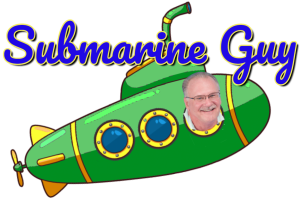Here's Week 13's
Tuesday Tech Tip for more leads!
Write and Send a Promotional Email to Your List
Writing and sending a promotional email to your list can drive quick results if done right, and you can complete the entire process in a single day by staying focused on your messaging, crafting a compelling offer, and using clear calls to action. Your goal is to engage your audience, highlight a specific product or service, and motivate them to take action immediately.
Start by defining the purpose of your promotional email. You need to be clear on what you want to promote and the desired outcome of the email. Whether you’re promoting a new product, offering a discount, or driving traffic to a sales page, focus on a single goal.
Avoid trying to cover too many things at once, which can dilute your message and confuse your audience. For example, if you’re promoting a limited-time offer on one of your products, that’s all the email should focus on.
Once you’ve defined your purpose, identify the offer. This could be a discount, a special deal, or a new product launch. The offer needs to be strong enough to motivate your audience to take action.
If you’re offering a discount, make it significant. If you’re promoting a new product, highlight what makes it unique and why your audience should care. Urgency is key in a promotional email. Use limited-time language like “24-hour sale” or “Only available this week” to encourage immediate action.
Now, craft your subject line. This is the first thing your audience will see, so it has to grab their attention quickly. Keep it short, clear, and focused on the value of the email. For example, if you’re offering a discount, a subject line like “Get 20% Off Your Favorite [Product] Today Only” works well.
If you’re promoting something new, try something like “Introducing [Product]: Your Solution for [Problem].” Avoid vague subject lines like “Exciting News” or “Check This Out”—be direct about what they’ll get inside.
With the subject line ready, move on to the email body. Start with a strong, engaging introduction that immediately captures your reader’s attention. Address their needs or pain points, and then position your offer as the solution.
For example, if you’re promoting a time-saving tool, your introduction might be something like: “Struggling to keep up with your daily tasks? Our new [Product] will help you get more done in less time—and today, you can get it at 20% off!”
After the introduction, clearly present the offer. Highlight the benefits of your product or service, not just its features. Focus on what your audience will gain or how their life will improve by taking advantage of the promotion.
Use clear, straightforward language to explain what’s in it for them. For example, “With [Product], you’ll save hours of work each week, leaving you more time to focus on what matters most.”
Next, include a call to action (CTA). Your CTA should be direct, prominent, and aligned with the email’s purpose. Use action-oriented language that tells your audience exactly what to do next, like “Click here to get 20% off now” or “Shop now and save.”
Make sure the CTA is visually distinct—use a button or bold text to make it stand out from the rest of the email content. You want it to be easy for the reader to take the next step without having to search for the link or button.
To create urgency, add a time limit to your offer. This helps motivate people to act quickly instead of putting off the decision. If your promotion is for 24 hours, emphasize that in the email, such as “This offer ends tonight!” or “Act fast—limited quantities available.” Urgency is one of the most effective drivers of action in promotional emails.
Keep the email body concise. Don’t overwhelm your audience with too much information. Highlight the offer, explain the benefits, and push them toward the CTA. Ideally, your email should only take a few moments to read. People often scan promotional emails, so keep sentences short and use formatting like bullet points or bold text to emphasize key points.
Before sending the email, proofread everything carefully. Check for typos, broken links, or any confusing language. The message should be crystal clear and error-free. Ensure the CTA link works properly and takes the reader to the right page, whether it’s your website, a product page, or a checkout link. A broken link or typo can cause confusion and reduce the effectiveness of your promotion.
Next, segment your email list if possible. If your offer is relevant to only part of your audience, send it to those people specifically. For instance, if you’re promoting a product that’s popular with a certain demographic or has been purchased by a segment of your audience before, focus the email on those individuals. Segmentation helps ensure that the right people receive the most relevant offers, increasing your chances of success.
Now, schedule or send the email. Use your email marketing platform (such as MailChimp, ConvertKit, or ActiveCampaign) to send it to your list. If you’re sending a time-sensitive promotion, make sure the timing of the email matches your offer. For example, if it’s a 24-hour flash sale, send the email early in the day and consider sending a reminder later on if the platform allows.
After sending, monitor the performance of the email. Track open rates, click-through rates, and conversions. This data helps you understand how well the promotion is performing and where you might need to adjust. If the open rate is low, your subject line may need more punch. If the click-through rate is low, the CTA might need to be more prominent or the offer clearer.
One suggestion: Publish most of your offer on your blog and link to your blog page from your email. This will help your offer become more permanent for the long term so you can revive the offer just by linking to it from a future email or video or from another blog post.
Call to Action
-
By the end of the day, you’ll have crafted and sent a targeted, compelling promotional email to your list, with clear benefits, a strong offer, and a call to action.
-
This will drive engagement, sales, or whatever action you’re looking for, all while providing value to your audience.
-
Keep refining your process with each email to get even better results in future campaigns.
Warmest regards,

|
Fred Raley The Submarine Guy |
 |
|
P.S. Check out this free Link Tree. It's a cool app that's good to use with Social media |
||